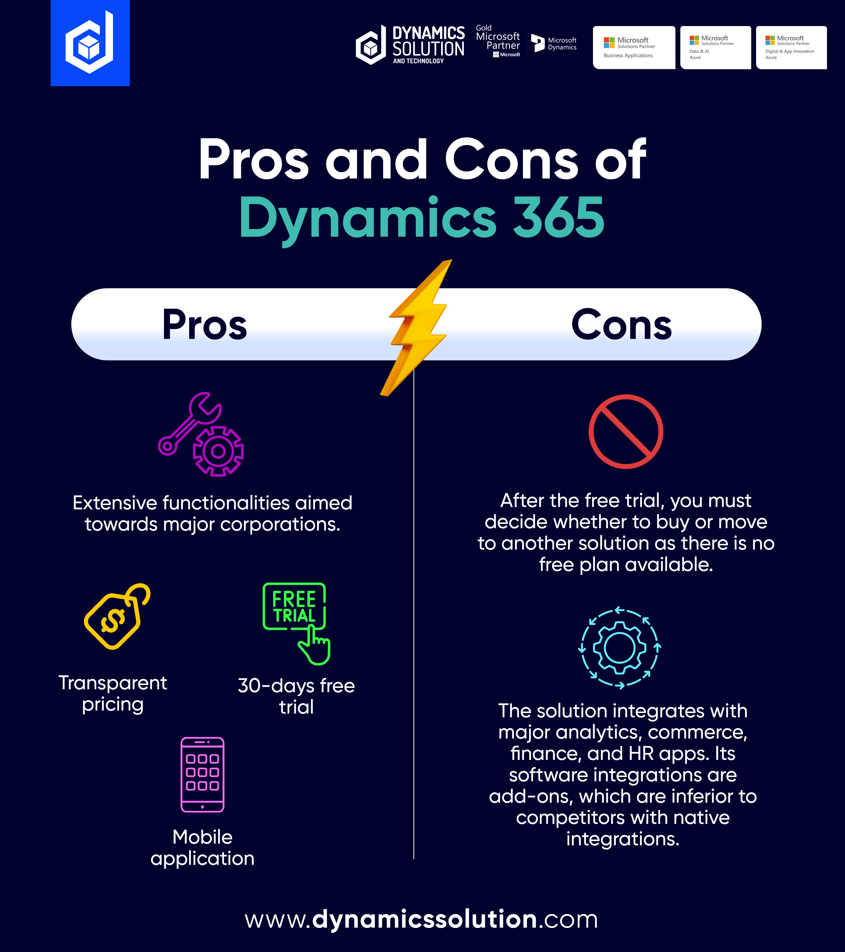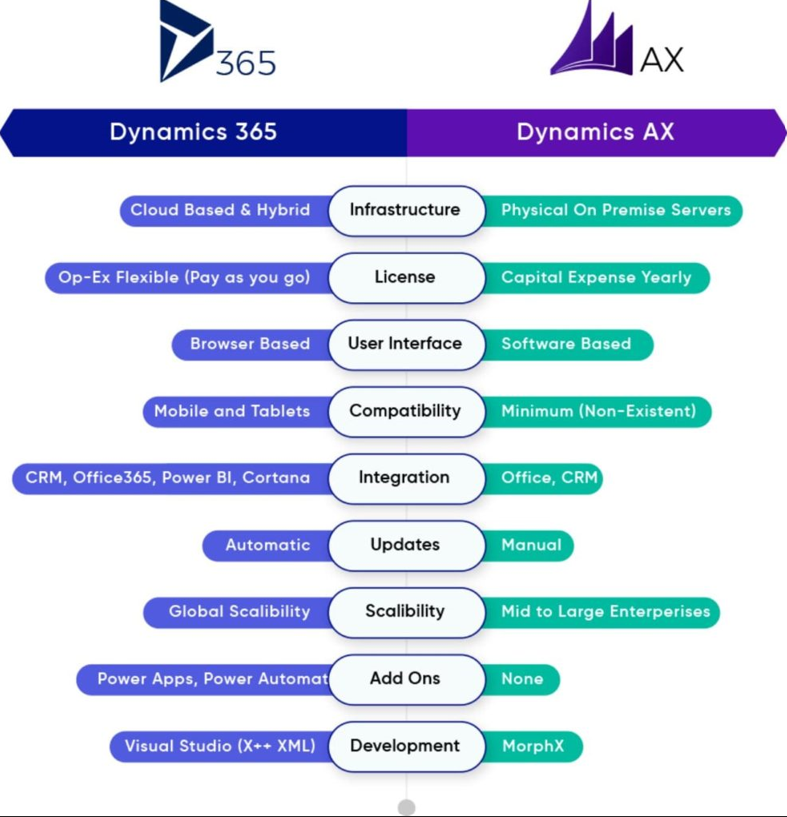Since Microsoft stopped providing maintenance for its on-premises Dynamics AX software, the vast majority of customers of Dynamics AX are now investigating cloud-based ERP alternatives. These businesses no longer have access to continuing updates and fixes that would otherwise keep their systems updated.
You might have heard the phrase “changing technology landscape” when someone uses the word cloud. Why? Because it provides some perspective on the revolutionary changes we’re witnessing.
Your on-premises business, which you used to consider cutting-edge, needs to be more adaptive, more helpful, and more secure. You have never given priority to elasticity, scalability, and accessibility. But now, you need to put a spotlight on them as new updates are constantly putting businesses, solutions, and processes to the test.
This blog is all about the migration from Dynamics AX to Dynamics 365 and the benefits you will get.
What was Dynamics AX all About?
According to Microsoft: “Dynamics AX is a powerful ERP software package for finance and operations. It helps global enterprises organize, automate, and optimize their processes on-premises, in the cloud, or through hybrid deployment.”
It mostly helps businesses in managing back-end operations to keep their operations running. It covers the following domains:
- Business intelligence.
- Warehouse management.
- Financial management.
- Retail and e-commerce management.
- Inventory management.
- Project management.
- Service management.
- Human resources management.
You can use some main CRM functions but not all. However, it might also help you in the sales and marketing domain.
Previously, you had two options to use Dynamics AX. One is by implementing it on-premises, and the other is on-cloud via VMs. The on-premises version is best for businesses that are security-concerned and want fully customized options. These businesses prefer to keep their products, applications, or data in their local infrastructure.
On the other side, in the cloud-based version, you have many more features to avail. It provides you with accessibility, flexibility, and scalability.
Pros and Cons of Dynamics AX
Let’s have a quick look at the benefits and disadvantages of Dynamics AX.

How is Dynamics 365 Making an Impact?
Dynamics 365 is a set of enterprise accounting and sales software products that helps businesses improve client engagement. It gives you the combined benefits of CRM and ERP, which in turn leads to more tailored interactions and enhanced customer experiences. Additionally, it simplifies processes, which results in cost savings as well as higher production.
The data-driven insights provided by this solution can help your business foresee trends and uncover possibilities for development. Additionally, its scalability means that it can benefit enterprises of all sizes, making it a game-changer in the contemporary environment of modern business.
Pros and Cons of Dynamics 365
Let’s have a quick look at the pros and cons of Dynamics 365.

Difference between Dynamics AX and Dynamics 365

Technical Differences Between Dynamics AX and Dynamics 365 for Finance and Operations
You might be wondering if there are any major differences between these two software as their parent company is the same. The answer, in short, is yes, and to clarify, the main difference is that Dynamics 365 cloud provides new capabilities than AX.
In addition to that, you can rapidly note the deployment and interface changes because all the apps are cloud-based, and you just need to put your login details in any device with an internet connection. You get the facility to enhance your user experience by setting your own default start pages and homepage colors, making the interface very personalized.
Plus, Dynamics 365 is superior to earlier versions of AX in terms of reporting and business intelligence, thanks to improved access to analytical capabilities driven by artificial intelligence and larger sets of business data.
Can Dynamics 365 Finance and Operations Help Your Business Grow?
The financial benefits of Dynamics 365 for Finance and Operations include increased company-wide visibility, strengthened financial controls, faster cash flow, more precise forecasting, and corporate compliance.
Improved project management is another way technology may help businesses increase output and earnings. When organizations use D365 F&O, they are able to better interact with project team members, control time, costs, and invoices, manage budgets, and speed the process of setting up new projects. Moreover, you can reduce your time span on report generation with top-tier reporting software and gain actionable, meaningful insights from your data.
Dynamics 365 offers you a cohesive approach to use discrete, lean, and process methods to assist your manufacturers in developing streamlined procedures per specific requirements. Also, for better communication with your people and expedited deliveries, you have a full-fledged option to use features of a supply chain platform.
Dynamics Solution and Technology’s Take on Dynamics AX Upgradation
Moving your business operations to the cloud must be your top priority now. Your competitors are not using the old stacks now, and five years down the line, the odds will be different from now. In fact, you should have done it back in 2016. But it is better late than never. Talk to us; we will create a strategy, do the wireframing, break down the process, and make your business an industry-trusted services provider with an up-to-date tech stack.
Dynamics Solution and Technology certified technical professionals understand that this shift by Microsoft is not the end. Microsoft will continue to keep improving its software and solutions in the future.
We keep updating our knowledge with every wave so you can serve your customers better and get close to your targeted mission. We generate a win-win situation for businesses out there who trust us as their success partner.
So, do not take any stress of data migration issues, disruption in operations, and integration challenges. We have been there and done that! You just need to schedule a meeting with our software upgrade professional. The rest is on us!






